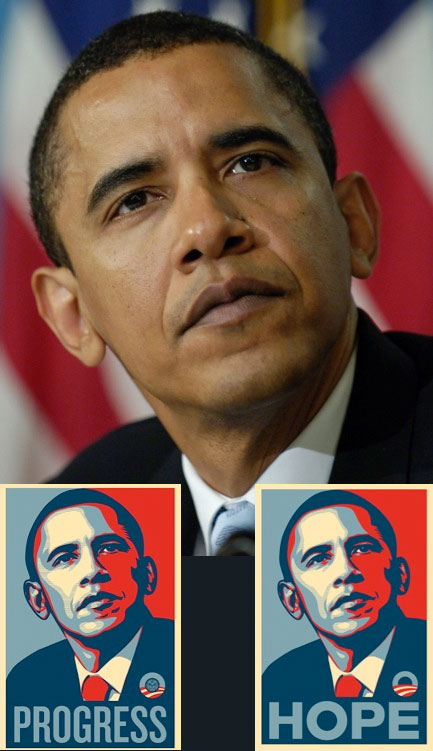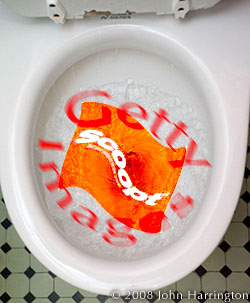 UPDATE: In the interest of reminding you, I thought I'd repost this piece to remind you of the importance of making your voice heard. Here again are things worth considering.
UPDATE: In the interest of reminding you, I thought I'd repost this piece to remind you of the importance of making your voice heard. Here again are things worth considering.
When I have found fault with the goings-on of one of any one of the photo trade organizations, I have called them out on it, and that includes ASMP. I took a great deal of heat from the leadership of ASMP for my criticism of them for their handling of the orphan works issue, and if they take a similar stand during the next session of Congress, I will do so again. Yet, keep in mind, while I was critical about that, and also critical of ASMP's handling of the disclosure of their $1.3 million dollars and their mis-steps related to the Library of Congress grant for UPDIG, I continue to think well of the many other things that ASMP has done, and is doing.
| A sidebar note to some of the readers of this blog - I realize that some of you want short, sweet, and concise missives on the varying discussing topics I write about. While this is not one of those cases where I can make the case and be short, if you don't want to continue reading, here it is in short (as of the graphic above wasn't clear enough) - I encourage you to OPPOSE the proposed change to the bylaws that you will be asked to vote on in the next few weeks. |
Organizations exist for many reasons, and one of the things that ASMP has done extensively, for longer than I have been a photographer, has been the promotion of monthly programming - educational, inspiring, and insightful. Having served on the local board of the ASMP chapter here in DC for several tumultuous years, I can tell you that it's not easy, or cheap, to program the chapter each year, which is something that starts each July. "Can we afford it?" "Do we have to pay for his hotel?" "Will an admission fee that high turn off potential attendees?" These were all questions we grappled with. We were always excited when we could get a Canon Explorer of Light, because Canon footed the entire bill (Nikon does not have a similar program), and it was always a home-run of a program, but that paradigm of programming wasn't something that would fill 8 or 9 meetings.
When the invitation came to me to be one of the national traveling speakers for ASMP's Strictly Business 2 series that ran at the beginning of this year, I was humbled and honored. When I was asked how much I might charge to participate, I said I'd volunteer to do it, because the original one was so inspirational, and I didn't want any speaking fees to get in the way of getting the message out, and I was not alone in my sentiments - other presenters expressed a similar sentiment. Yet, ASMP countered "there's a lot of planning and time commitments for this, and we can't pay you what you really should be paid, but we can pay you something, as we are getting sponsorships for this." I said I'd take whatever they decided was fair, and it was fair, and boy were they right when they said there would be a lot of planning and time commitments seperate from the time actually giving the presentations. Multiple trips to Philadelphia, and a trip to Los Angeles were among the travel necessary before we gave the first SB2 presentation. A thorough review of my time spent away from DC doing ASMP work just for SB2 quantifiably cost me over $11,400 in lost assignments, net after factoring in the revenue from the speakers fees for each city. I didn't object - I had earned exponentially more than that since SB1 over 12 years prior, and I felt it karmically the right thing to do, and also something I've done for the NPPA, APA, and PPA too. And remember, I am not an ASMP board member, just a general member.
I am not complaining, I am quantifying this for you, in response to very serious criticism being put forth against the ASMP leadership, and the resulting referendum that has been proposed -- which will be be voted on by ASMP members. If passed, this referendum would revise the ASMP bylaws to forbid the organization from paying its' board members any amount - even a dime - for the time spent away from their business while traveling the country on behalf of ASMP, participating in ASMP programs (educational or otherwise). I whole-heartedly oppose the referendum and encourage you to vote against it.
For those of you who would like to know why, hit the jump.
(Continued after the Jump)
Times have changed. An email from a highly respected former past presdent of ASMP - Matt Herron that went out to members attempted to bolster the position held by Scott Highton - who is championing the effort to preclude ASMP leaders from being paid for giving presentations. Herron, whom has done many many excellent things for this industry that you will never know about but have benefited from, starts his piece "a little history", when writing in support of the payment preclusion, and therein lies the weakness of the position - Herron's position is rooted in history. Herron talks about his volunteerism as well as that of countless others recieving no compensation for their time. Times have changed and there are now sponsorship dollars to make these programs happen to such a degree that these programs could never have been put on before. The tradition of volunteerism that Herron speaks about when he suggests "Obviously in your mind at least, that tradition is now dead." Nothing could be further from the truth. Herron writes "I find it disturbing that so many Board members and ASMP officers are paid so much for activities that many of us freely gave for nothing in prior years." And again, Herron suggests that the past volunteer solution fits todays reality. It does not. Herron concludes - " I know that while some boards exercise sound judgment and ethical conduct, others do not." The boards minutes approve figures ""negotiated by ASMP's Executive Director", who is Eugene Mopsik. Thus, Mopsik is the person who ultimately offers, negotiates, and then approves these figures, not the board members.
Speakers fees for these programs are paid for, in full in almost all cases, by the organizations sponsoring the talks, whether it's Adbase, liveBooks, Microsoft, or any others. Further, the expense of getting the speakers to/from the various chapter cities are paid for by the admission fees each chapter charges. A review of ASMP-national-paid figures associated with one 40-city national tour for one speaker totaled $1,200 - for all 40 programs. The criticism comes in because these companies are paying ASMP, and then, in turn, that money is paid through to the speaker(s). While I could see that some might construe this as the appearance of a conflict of interest, I disagree, or, at-least I believe fully that it is not a conflict. It's far easier - and likely better from a tax/accounting standpoint - if these corporations make their payments in a lump sum to ASMP, and then ASMP administers that, and, in the event that a speaker has to be replaced, ASMP handles that, not the corporation. Further, ASMP leadership is not a place where people join to earn untold riches. In instances of some board members I know, they are losing revenue more than they are earning, yet they feel compelled, as have countless others before them, to give back, and the disbursement of monies to them for time spent is a fair and just thing to do.
The criticisms of board members, and past board members, fails to take into account that most of these programs were either proposed and approved prior to presenters becoming board members, or board members who are no longer board members, yet continue to give back by giving programs. This coming year, ASMP has a great slate of programs planned, and I believe they all are worth attending. If you're an ASMP member, and want to see how the board is handling this, the board also provides a page of payments to directors on the website to provide even more information above what is required, including dollars spent. http://www.asmp.org/membersarea/PaymentsToDirectors.php
ASMP needs to continue to be able to produce a national programming series, and the preclusion of paying honorariums for the days it takes to travel to, speak in, and then travel back from the next day, one program, will make for slim pickings for talent to fill the needed shoes. When it comes to determining the ability and worth of speakers, ASMP leadership is highly discerning in that endeavor.
For example, despite my having given dozens of talks to many ASMP chapters around the county, NPPA presentations over many years, APA talks, and so on, with glowing attendee reviews in hand, neatly organized by event and made available to ASMP, I had to prove I could present, and I had my try-out at an APA talk in Chicago I gave two or so years ago. So, with SB2 having been a rousing success, I have all the faith in the world that those charged with programming and choosing speakers, are doing so with great thought and deliberation, and have earned the memberships' trust as good stewards of our best interests.
In one of the criticisms leveled at ASMP by Highton surrounds the payments to those travelling the country on behalf of ASMP for the highly beneficial "It's Your Business" series of programs. He cites a stipend of $1,000 and travel expenses bringing that number closer to $2,000. Since Herron (and likely Highton too) travelled for ASMP, and as Herron notes "We were paid travel expenses, and that was it", let's stick to the point about being paid $1,000. Highton, in an attempt to diminish the programming, refers to the presentations thusly - " These programs are 2-3 hours long each", as if these presenters are being paid that much for 2-3 hours.
As both Highton and Herron know and likely practice - they charge for travel time to and from assignments for driving and flying to offset their loss of assignment income during that time. In my case, if I have an assignment to cover an event in New York City for 3 hours, I will bill a 3-hour minimum of $600 ($200/hr), plus all my travel time at a 50% rate. So, 4 hours driving up, 4 hours driving back, is eight hours at $100/hr, plus mileage/tolls and so on. in a few weeks, I travel to the Boston area to give a non-ASMP presentation and to do so, I have to leave for the airport at around 10am to arrive by 3pm to give my evening presentation, and miss the last flight out, so I fly out in the morning, not getting home until late morning, or early afternoon. thus, two days of my revenue-generating abilities are lost. So too, these national presenters lose two days for each presentation they do. So, to suggest they are "earning" $1,000 for 2-3 hours is to exclude all of the travel time spent getting to and from these locations. It works out to about $500 a day, and these are top-tier photographers who would likely bill out at $1,500 to $2,500 for an assignment that would take a day, not to mention two days.
Another criticism was of Susan Carr, a past ASMP national president (who was kind enough to blurb my book for it's back cover following her tenure), and whom I worked closely with on the Strictly Business 2 national tour. Highton suggests Carr "coincidentally was hired recently as ASMP's part time education director." Actually, that's just plain false. Carr revealed that fact back in February or March during the closing forum at one of the SB2 stops to an assembled audience of several hundred. So, it's closer to a year ago, if not longer, that Susan decided to dial back her shooting schedule to commit her time to ASMP National on a part-time job basis. So too did Highton criticize Carr for being paid for the job of editing the latest edition of ASMP's Business Practices book. For the hundreds of hours of work she spent corralling authors, updating pieces from the previous editions, and shepherding the book through the entire process, and as someone who had three paid editors working with me on my book, that is a monumental task, and thus, payment to her - to anyone - is a no-brainer for me, and further, few people know that content as well as she does, so she was the perfect candidate to do it.
Now, we're not talking about local presentations here, but Highton lumps them all together as if they are the same - and they are not. Highton writes "Most other members who make presentations at chapter meetings do so willingly, at no cost. " Yes, that's true, and I do that too. When my book came out, not only did I do a free presentation to my DC chapter (to even have suggested my local chapter pay me is, on it's face, a ludicrous thought), I convinced my publisher to donate 50 copies of the book to the meeting. Then, I drove 2 hours to Richmond Virginia to make a presentation for the Central Virginia chapter, and I too would go to Baltimore to give a presentation there too, as a local chapter to me. Local volunteerism is a critical cornerstone of ASMP's viability, but that's not the same as getting on a plane to fly for 4+ hours in the air and doing it for free.
Highton closes one of his letters to the members "ASMP's very foundations of "photographers helping photographers" and working together as volunteers for our common good is at stake." Which is alarmist at best, but false at it's core. ASMP's foundation is about local activism and participation, and that will never change. As people evolve to the level of National Leadership, where it is required to travel several times a year on ASMP business, that commitment takes on an entirely higher level of commitment and time. Highton does the math on the interest generated from $1.3m sitting in the bank earning 5%, with a possible yield of $65k, as a way of diminishing the $85k that ASMP paid to the PLUS Coalition. Wouldn't it be nice if that money somehow could become an endowment with ASMP spending just the interest and thus allowing them to put on programs and presentations never done before? Increase the token compensation of the President? Offset lost assignment days by board members with token amounts?
So, it should be clear here that the well-intentioned efforts of Highton/Herron/et al are wreaking havoc on the organization, distracting ASMP leadership from pursuring the core mission of the organization, and from delivering maximum benefit to the members, at a time when ASMP members (and in fact, all photographers) need all that ASMP has to offer.
While the mechanism of a referendum is a valuable one, the issue of TOKEN payments to leaders and members for time dedicated to ASMP programs is (or should be) a non-issue. Lets not throw the baby out with the bath water.
Please post your comments by clicking the link below. If you've got questions, please pose them in our Photo Business Forum Flickr Group Discussion Threads.
[More: Full Post and Comments]
 Shepard Fairey, interviewed on Monday, February 2nd, by Charlie Rose, is embedded below.
Shepard Fairey, interviewed on Monday, February 2nd, by Charlie Rose, is embedded below. 





